Introduction:
Work as we know it is being rewritten — and the Microsoft’s Latest AI Push in 2025, Microsoft is holding the pen. Artificial Intelligence (AI) has gone mainstream, powering everything from emails to boardroom decisions.
With Microsoft 365 Copilot and the Fabric data platform, Microsoft is embedding AI across its ecosystem, turning intelligent systems into everyday collaborators.
Unlike past AI hype cycles, this revolution is practical and results-driven. AI agents now handle repetitive tasks, freeing employees to focus on creativity, strategy, and high-impact decisions. For a deeper look at how AI is transforming workplace productivity, check out The Rise of AI Assistants in 2025.
👉 In short: Microsoft’s AI strategy is about more than tools — it’s about redesigning how organizations operate, compete, and innovate in an AI-first economy.
What is Driving Microsoft’s AI Push in 2025?

Microsoft’s AI surge in 2025 is fueled by three strategic pillars that are reshaping the future of work, enterprise efficiency, and even sustainability in technology.
1. Moving Beyond OpenAI Dependency
For years, Microsoft relied heavily on OpenAI’s GPT models. In 2025, the company has diversified partnerships—most notably with Anthropic—while also developing in-house AI models. According to Reuters (Sept 2025), parts of Microsoft’s AI workloads are now routed through Anthropic technology.
This hybrid approach reduces dependency and ensures long-term strategic control while giving Microsoft flexibility to innovate faster than competitors. Learn more about AI agents in action in The Rise of AI Assistants in 2025.
2. Heavy Infrastructure Investments
AI requires massive computing power. Microsoft is building large-scale training clusters to scale its AI capabilities efficiently. As reported by The Verge, this infrastructure expansion allows proprietary models to be trained faster, helping Microsoft stay competitive with Google, Amazon, and Meta.
By optimizing AI workloads, enterprises can achieve both robust performance and faster decision-making, similar to insights shared in Best AI Tools for SEO: Boost Your Rankings in 2025, where advanced AI tools improve efficiency and outcomes.
3. Microsoft Fabric: The Data Backbone
Microsoft Fabric is emerging as the central data platform for AI-driven enterprises. By integrating Graph and geospatial analytics, businesses can unify fragmented data sources, run real-time analysis, and prepare AI-ready datasets. This enables smarter, faster decision-making across operations, from supply chain optimization to customer insights.
For a glimpse of how AI-driven data pipelines enhance operational efficiency and sustainability, see AI Drives Sustainable Efficiency in Automotive and learn how AI intersects with sustainable tech in The Power of Green Technology.
Key Components of Microsoft’s AI Strategy
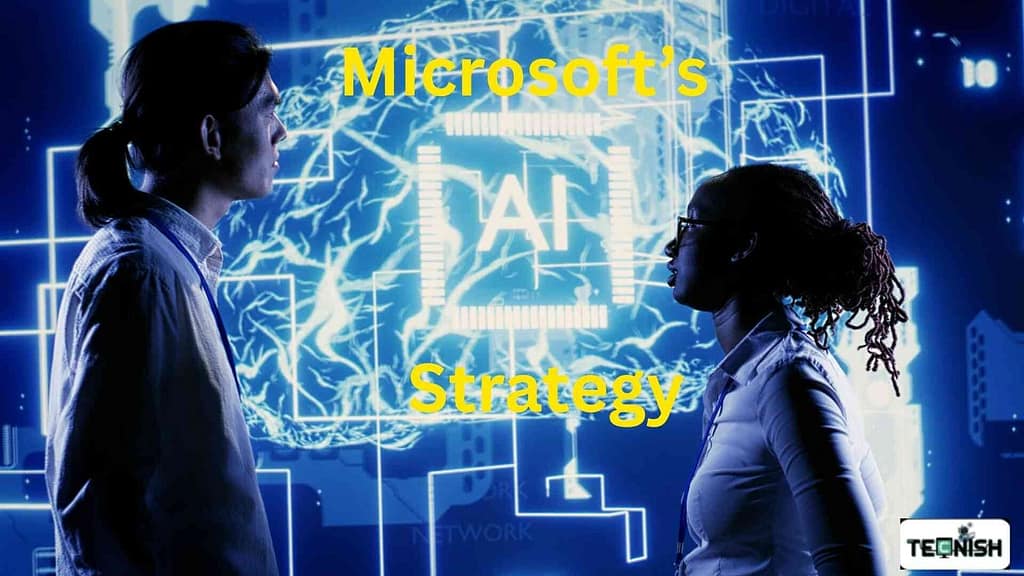
Microsoft 365 Copilot & AI Agents
Microsoft 365 Copilot is no longer an experiment — it’s the centerpiece of Microsoft’s AI ecosystem. Integrated into Word, Excel, Outlook, and Teams, Copilot automates drafting, summarizing, and workflow organization.
With Copilot Studio, businesses can now create custom AI agents tailored to their unique needs. Early adopters like Barclays and NTT DATA are already using Copilot to accelerate customer service, streamline operations, and boost productivity. Learn more about AI assistants in action in The Rise of AI Assistants in 2025.
Microsoft Fabric & Data Readiness
Fabric unifies data pipelines across organizations, reducing silos and making information accessible to AI models. By integrating Graph and Maps, Microsoft enables advanced real-time insights — from customer behavior analytics to supply chain optimization.
This ensures AI solutions are contextually aware and operationally relevant, driving smarter decisions and efficiency. For insights into how AI affects data-driven efficiency and sustainability, see How AI Impacts the Environment and Energy Use.
In-House Models & Compute Clusters
To reduce reliance on external vendors, Microsoft is training its own AI models. Massive compute clusters provide the horsepower required, ensuring flexibility, faster innovation, and full control over AI development. This signals Microsoft’s ambition to lead the enterprise AI race and maintain strategic independence.
How Microsoft’s AI is Transforming the Workplace
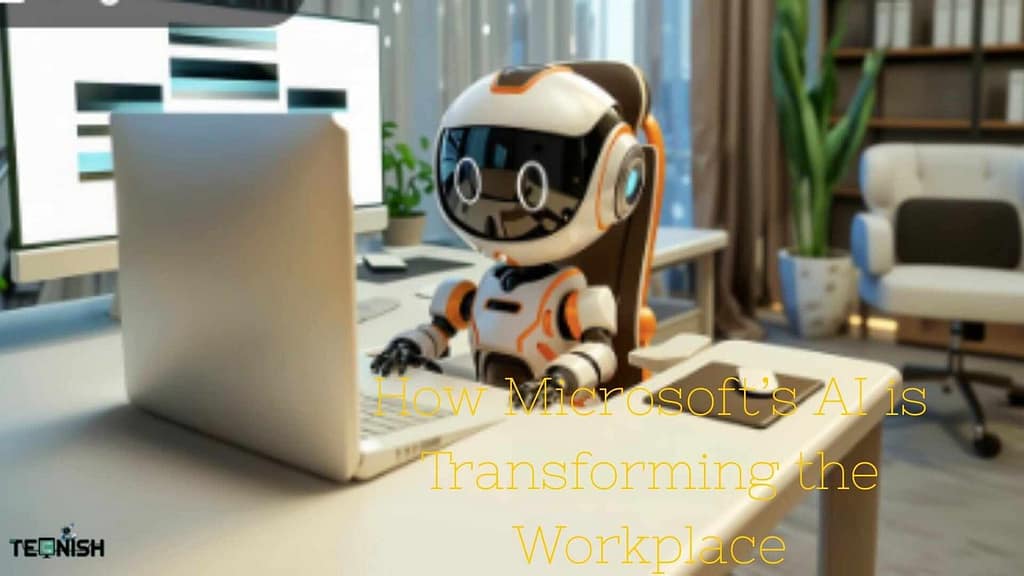
Productivity & Efficiency Gains
Routine tasks like meeting notes, email drafts, and report generation are now automated. Employees save hours weekly, redirecting focus toward strategy and innovation.
Employee Roles & Skills Evolution
The future of work demands AI literacy. Roles are shifting from manual execution to managing, supervising, and collaborating with AI agents. New skills—prompt engineering, data fluency, and ethical AI use—are becoming core job requirements.
Workplace Culture & Flexibility
AI is enhancing hybrid work environments by making virtual collaboration seamless. From real-time translation in Teams to personalized task recommendations, Microsoft is redefining digital employee experiences.
Business & Organizational Impacts
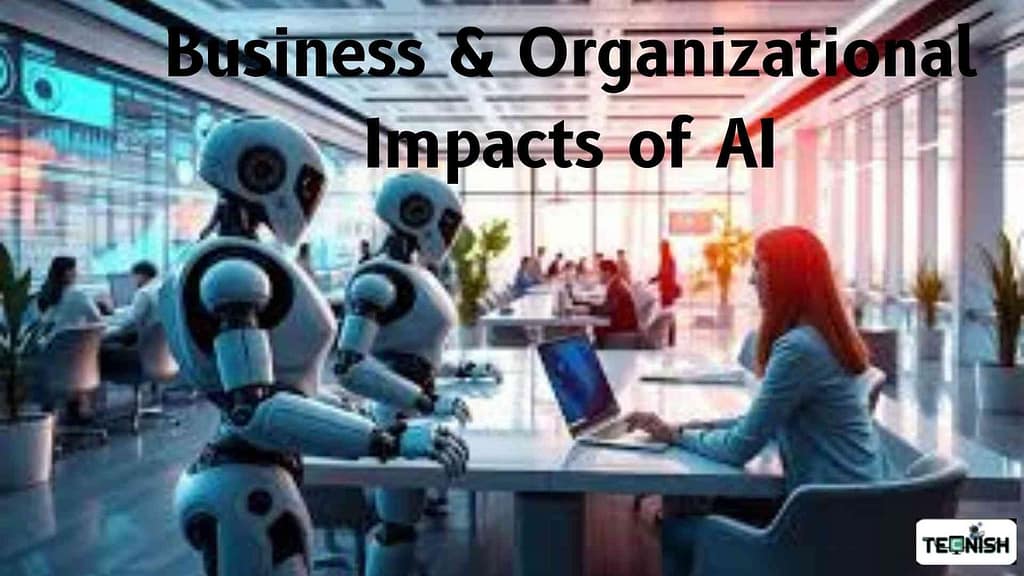
Business & Organizational Impacts
AI is creating a two-speed economy — enterprise giants are racing ahead with AI, while many SMEs struggle to keep up due to cost and complexity.
| Benefit | Large Enterprises | Small/Medium Enterprises (SMEs) |
| Efficiency | Major cost savings, faster decision-making | Limited ROI due to upfront investment |
| Competitive Advantage | Early adopters gain market share | Risk of falling behind rivals |
| Data Strategy | Full integration with Microsoft Fabric | Struggle with fragmented data |
| Innovation | Build custom Copilot agents | Limited resources to experiment |
| Workforce Skills | Upskilling at scale, AI literacy programs | Lack of training budgets, slower adoption |
According to McKinsey research, companies leading in AI adoption are 3x more likely to report revenue growth above their industry peers.
AI assistants are one of the key enablers of this shift — discover how they’re redefining workflows across industries. But this rapid adoption also has a hidden cost — AI’s carbon footprint is rising faster than ever.
Risks & Challenges Ahead
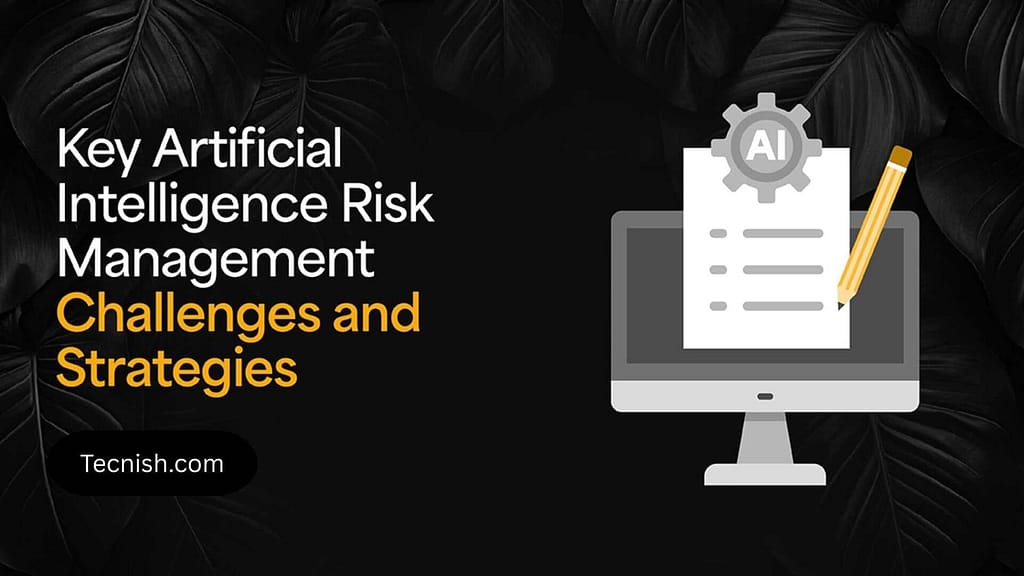
While Microsoft’s AI strategy opens up vast opportunities, there are real risks businesses must anticipate and plan for:
- Workforce Displacement → Automation could replace many routine roles. Organizations must invest in reskilling so employees can shift toward oversight, strategy, and creative functions. Learn how AI assistants are shaping workforce dynamics in 2025 in The Rise of AI Assistants.
- Ethics & Bias → AI systems need rigorous audit trails, diverse training data, and fairness evaluation protocols to avoid perpetuating discrimination. For insight into responsible AI and its broader impacts, see How AI Drives Sustainable Efficiency in Automotive.
- Privacy & Data Security → As AI integrates more deeply with sensitive systems — from enterprise databases to sensor networks like in EVs — the risk of breaches increases. Connected systems generate real-time data that can expose new vulnerabilities if not carefully managed.
- Cost & Infrastructure Barriers → High upfront costs of compute, infrastructure, and specialized talent make it hard for smaller organizations to catch up.
According to PwC research, as much as 30% of jobs may be automated by the mid-2030s, making reskilling initiatives critical. For a deeper look at AI’s societal implications, see this guide on how AI impacts the environment and energy use.
The Future Outlook — What’s Next for Microsoft AI?
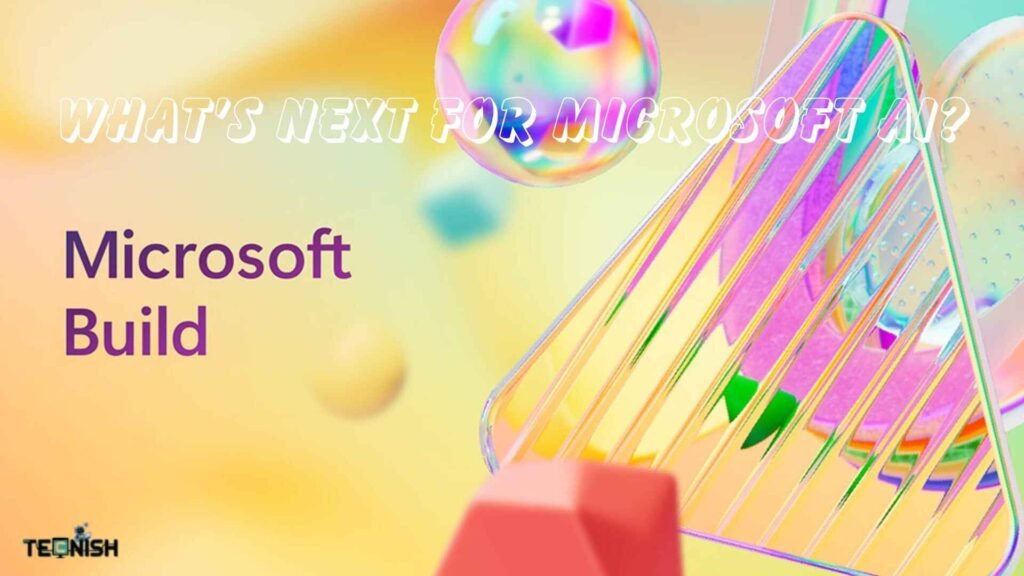
Microsoft’s AI journey is entering its most ambitious phase yet — a move from AI as an assistant to AI as an autonomous collaborator. The next three to five years will not simply be about automating tasks, but about reimagining work itself.
AI Agents as Orchestrators, Not Just Helpers
By 2026, Copilot will likely evolve into a true workflow orchestrator, capable of initiating, managing, and completing multi-step tasks across departments. For instance, imagine an AI agent that collects customer data from CRM, drafts a proposal in Word, generates financial projections in Excel, and schedules a review meeting in Teams — all before you even check your inbox.
Satya Nadella recently said: “We are moving from autopilot to copilot — and soon to autopilot with oversight.” This signals Microsoft’s long-term goal: AI that acts independently but remains transparent and controllable.
Verticalized, Regulation-Ready AI
Expect Microsoft to launch industry-specific copilots for sectors like healthcare, finance, and government — trained on regulatory-compliant datasets. These copilots will handle tasks like HIPAA-compliant patient summaries or SEC-compliant financial filings, removing one of the biggest adoption barriers in sensitive industries.
Immersive, Multimodal Collaboration
Microsoft is betting big on Mesh for Teams and AR/VR integration. By combining spatial computing with Copilot, meetings will evolve into data-driven collaboration hubs where AI participates actively — visualizing live analytics, generating instant reports, and even mediating brainstorming sessions.
Sustainability Becomes a Competitive Edge
AI’s energy footprint is under growing scrutiny. Large language model training can emit hundreds of tons of CO₂ per run. According to industry research, AI workloads could account for 4% of global electricity use by 2030 if left unchecked. Microsoft will likely double down on green AI initiatives — from liquid-cooled data centers to energy-efficient model training.
For a deeper dive, see How AI Hurts the Environment: Carbon & Energy Use — a must-read for anyone concerned about the hidden costs of AI’s rapid growth.
The Everyday AI Assistant Era
The article The Rise of AI Assistants in 2025 outlines how assistants are evolving from reactive tools to proactive companions. Microsoft is expected to bring Copilot into Windows, Edge, and even consumer-facing services — enabling users to plan trips, manage personal finances, and organize life events without switching platforms.
AI Literacy as a Core Workforce Skill
AI will not just change jobs — it will change what it means to be employable. By 2030, prompt engineering, data fluency, and ethical AI oversight will be as fundamental as Excel skills are today. Microsoft is already offering Copilot learning modules for employees, signaling that AI literacy will soon become a baseline requirement for career growth.
Strategic Takeaways
- Speed vs. Responsibility: Companies that adopt AI early will gain a market advantage — but only those that address bias, privacy, and sustainability will build long-term trust.
- AI + Humans = Hybrid Future: The winning workplaces won’t replace humans; they’ll amplify them.
- Now is the Time to Prepare: Organizations should invest in data readiness, AI literacy programs, and governance frameworks today — not wait until disruption hits.
Conclusion
Microsoft’s AI push in 2025 is more than a technology upgrade—it’s a paradigm shift in how work gets done. By integrating Copilot, Fabric, and custom AI agents, Microsoft is empowering employees, transforming organizations, and shaping the global economy. Learn more about AI agents in action in The Rise of AI Assistants in 2025.
The road ahead isn’t without challenges: workforce adaptation, ethics, and cost barriers remain critical. However, AI is not replacing humans—it’s redefining human potential. Forward-looking organizations can leverage AI to handle routine tasks while enabling employees to focus on creativity, strategy, and high-impact decision-making. For insights into sustainable AI adoption, see AI Drives Sustainable Efficiency in Automotive.
Final thought: The future of work will be hybrid—AI will manage the repetitive, and humans will lead innovation, creativity, and meaningful impact. Organizations that embrace this balance today will define the leaders of tomorrow’s AI-first economy.
FAQs on Microsoft’s AI & Future of Work
Q1. What is Microsoft Copilot used for?
Copilot automates tasks like drafting emails, summarizing reports, and analyzing data within Microsoft 365. Learn how AI assistants are boosting workplace productivity in The Rise of AI Assistants in 2025.
Q2. Will Microsoft AI replace jobs?
AI may automate repetitive roles, but experts argue it will also create new opportunities requiring AI skills. According to PwC research, up to 30% of jobs could be automated by the mid-2030s, highlighting the importance of reskilling initiatives.
Q3. How does Microsoft Fabric help businesses?
Fabric unifies data across organizations, enabling real-time analytics and AI-ready insights. It supports smarter decision-making and operational efficiency, as seen in AI Drives Sustainable Efficiency in Automotive.
Q4. Is Microsoft’s AI safe and ethical?
Microsoft emphasizes responsible AI, implementing bias audits, fairness evaluation protocols, and privacy safeguards. While these measures mitigate risks, challenges like bias, misuse, and data security remain. For practical examples of ethical AI in action, see our guide on AI-powered workplace productivity.
Q5. How is Microsoft using AI to drive sustainability in operations?
Microsoft uses AI to optimize energy use, reduce emissions, and improve operational efficiency. AI-driven insights help organizations manage resources smarter, from supply chains to real-time analytics, enabling predictive maintenance and energy savings.
Author Bio
Mamun Khan Rabbi is a digital marketing and technology expert with over a decade of experience in SEO, AI, and emerging tech trends. He helps businesses leverage AI-driven strategies to boost productivity, online visibility, and innovation.
Follow Mamun Khan for the latest insights on AI, tech, and digital marketing strategies. Stay ahead with tips, trends, and expert advice!

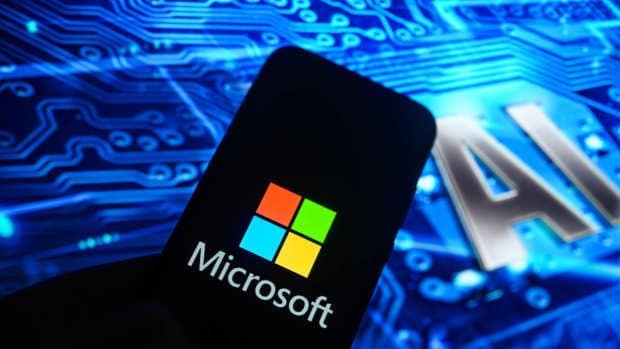
2 Comments
[…] you’ll find trending AI stories like Microsoft’s Latest AI Push in 2025 and The Rise of AI Assistants in 2025, both packed with insights for AI […]
[…] release, titled Microsoft Windows 11 October 2025 update, reinforces Microsoft’s vision to deliver a more intuitive and personalized computing environment […]